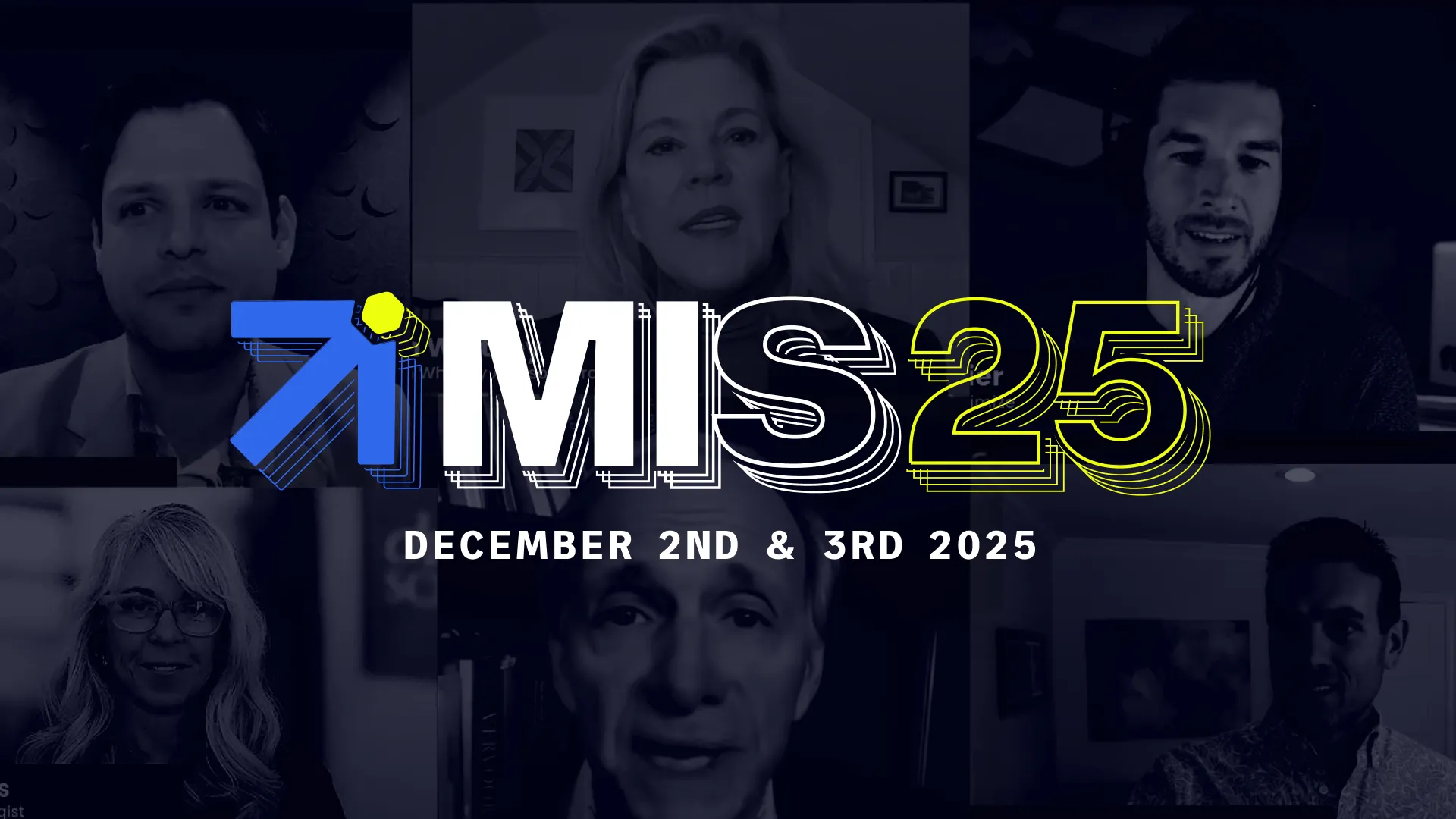“Most brands in finance fall flat when it comes to content creation.” – Oscar Mackenzie, Head of Marketing, Shares.
Harsh but true, Oscar. Fortunately, most is not all and there are plenty of brands that are nailing it – which is more important than ever. With acquisition costs on the up across the sector, engaging and retaining customers affordably can be a game changer.
But we’re not just stating the obvious here. This isn’t a tease. No, we want to help you nail it yourselves by learning from the best. With that in mind, we did something crazy: we asked them.
As well as Oscar from Shares, we spoke to Annie Ulliana, Head of Content and Communications at Moneybox, Earl Myers, Cleo’s Head of Content, and Katie Perry, GM for B2B and Editorial at Public. We asked them what worked this year, how they made it happen, and what they plan to focus on in 2024.
It was all about education, education, education
Across the board, the focus was on strategies that educate users and empower them to make smart financial decisions. A UK study from Charles Stanley found that the main reasons people stop investing are concerns about market volatility or because their investments aren’t performing as well as they wanted. If investors feel like their investments are doing well (or they better understand why they’re not), they’re more likely to carry on investing. 74% of investors we spoke to say they would probably invest more if investment content was easier to find.
It pays to help your users become smarter investors, especially in volatile times like these. “It’s been a rollercoaster year for investors, so we’ve focused on providing entertainment and educational value that can help our users understand the forces at play behind some of the year’s biggest market moves,” says Earl. And Cleo’s aptly named “Grow your wealth” education section hosts plenty of content with today’s economy in mind with articles such as “Easy side hustles: earning extra with minimal effort” and “Feast mode on a budget: how to host a thrifty Thanksgiving dinner”.
At Moneybox, Annie has seen something similar. “Our community relates mostly to our financial guidance content,” she says. “Whether it’s top tips from experts or macro-market commentary, in a cost of living crisis it feels right that people rely on education to help keep their savings on track and working hard to reach their goals.”
“The hallmark of modern retail investors is on-the-job training.” Katie Perry, Public
That educational focus is clear across the Moneybox channels too. The entire content section is called “Learn” and in-app they have the comprehensive “ Investing Academy”. And for added credibility, it’s almost all authored by Moneybox’s Head of Personal Finance, Bryan Byrnes, formerly of Coutts, RBS, and WealthSimple. Credibility was a winner for Public as well. “Some of our most popular content was in the form of audio and text-based briefs that brought in credible experts to break down news as it happened,” says Katie.
Every day is a school day with these strategies, but there is an understanding that schools have different years and grades: the seniors have to be catered for just as much as the freshmen. These are clever folks and you have to keep them engaged – or else, watch them transfer to a competitor. “The hallmark of modern retail investors is on-the-job training,” says Katie. Retail investors “diversified following the 2021 meme stock era, added balance to their portfolios during the volatility of 2022, and in 2023, they continue to anchor onto market news and events, especially the high-interest environment, to continue to build their sophistication.”
Content was created for communities, by communities

It wasn’t all about hearing from ex-bankers and analysts, though. The other expert: “Real people,” says Earl. “Real people having real experiences with money deeply resonated with audiences this year.” For Cleo, that meant real-world campaigns such as rewarding lifestyle and beauty influencer, Rana, a one-off role as its “Chief Spending Officer” and letting Cleo’s more than 200,000 TikTok followers vote on how she spent her money, teaching everyone a valuable lesson about budgeting in the process.
Shares went down a similar street. Literally. “We’ve focused on creating content with the public – hitting the streets for interviews that have driven millions of organic views across TikTok, Instagram Reels, and YouTube Shorts,” Oscar tells us. “It starts conversations, encourages audiences to reflect on their own positions and brings them closer to the world of investment.” For example, a video that seems like a classic game of “would you rather”, (in this case: have £100,000 right now or a penny that doubles every day for 31 years) is actually a stealthy lesson in the long-game approach required for investing. “This content is supremely effective,” says Oscar, “low cost, simply edited and thought-provoking. Inspiring conversation in your niche is a huge opportunity for any brand in the finance space,”

“Real people having real experiences with money deeply resonated with audiences this year.” Earl Myers, Cleo
These “man on the street” videos mirror some of the most viral non-financial social accounts such as What’s Poppin with Davis (2.1 million followers on TikTok), which have amassed millions of views by presenting real people sharing their experiences and opinions and, in turn, inviting viewers to think about and share their own. Financial content, which can still feel off-putting and alien for many modern investors, is prime real estate for these conversations.
It’s about reflecting how the relationship between financial brands and consumers has changed, says Oscar. Where they “have often been transactional and one-dimensional,” consumers now want “a three-dimensional relationship that allows for reciprocated conversations.”
Grow your business
with Finimize
Our Partners














TikTok was a game changer
“We've seen our customers engaging with different types of content, depending on the channel,” Annie tells us, and there’s no doubt that a multichannel approach was essential for success in 2023. Moneybox, Shares, Cleo and Public have multiple social accounts, as well as libraries of educational blog content. Shares even has its own media company, Scoop.
“We've seen our customers engaging with different types of content, depending on the channel.” Annie Ulliana, Moneybox

But it was TikTok that came up over and over again. In the last few years, TikTok has emerged as a surprising source of financial and investment information, especially for younger consumers. Almost two-thirds of 18 to 24-year-olds follow TikTok influencers who talk about budgeting, money, or personal finance and, in a worrying trend for traditional outlets, 40% think TikTok influencers give better advice than the media.
Forward-thinking brands have already tapped into this, spotting an engaged and educated audience that is hungry for impartial financial advice. “Dynamic TikTok deep dives of companies our users can invest in on Shares have been key,” says Oscar. “We’ve profiled brands with huge public interest like Apple, Microsoft, Crocs, and Lululemon to ensure our content feels relevant and engaging and reaches beyond just investment audiences. Millions of views later and we’re confident that we’ve found a formula for consistent success here.”
What’s the plan for 2024?
For most of our interviewees, it’s more of the same in 2024 – just bigger and better. “Content that dials into the curiosities, challenges, and pain points of your audience is only going to grow in importance,” says Oscar. This, thinks Earl, means brands can’t rest on their laurels, even if they’re doing well. “Focusing on bringing audiences and users into content at greater volume is crucial as the space gets more and more saturated, so it's crucial to continue innovating”. At Moneybox, Annie already has an idea how they’re going to cut through the noise. “We’ll be looking into how we can evolve our educational content pieces by giving them a twist, say, with a celebrity presenter on our videos.”
“It's crucial to continue innovating.” Earl Myers, Cleo
It’s going to be AI’s year
2024, of course, comes with a new challenge for all brands: AI. And our new robot overlords are causing some to consider a change of direction. For Earl, TikTok was likely “the next untapped frontier for SEO,” but concerns around just how much generative AI could saturate the market have caused a change of heart. “We're thinking more seriously about quality versus quantity. Less daily email blasts, more long-form newsletters. People do get a lot of emails, but in a world where notifications are mostly off, it's still one of the most effective and intimate ways to connect with your crowd.” This is a strategy that could pay off, with the long-form newsletter currently having a bit of a moment thanks to newsletter platforms like Substack, which now has over two million paying subscribers and 35 million non-paid.
At Public, 19% of its members are already using generative AI to help quickly scan and assess dense financial information. This, thinks Katie, is reflective of a time “where investors focused on diligence are seeking out more content sources and tools to enhance and accelerate their decision-making.” For brands looking to produce simple content, this is another hurdle. If AI can simplify the markets faster than you can, you’ve got to make sure your content is far more engaging.
Win the long game with Finimize
As Oscar puts it, “pound for pound, strategic content creation and brand building is the most powerful driver of value for your organization.” But for companies new to content, getting started is hard. Most financial businesses have the expertise in-house but few have the content marketing chops to turn that into content people want to consume, and even if they do, “companies that are just getting started in the content game are late to the party, [...] you're not just going to crack a high difficulty keyword the way it used to be done.”
“Building intangible value and brand affinity is a long game.” – Oscar Mackenzie, Shares
This is where Finimize can help. Across channels and formats, our content consistently achieves outcomes that are far above the industry average: our weekly active user count as a proportion of monthly active users sits around a social-media-like 50%, for example. In other words, half our monthly users are engaging with our content every week. And our news and analysis audio solutions see twice the completion rate of the average podcast. Over 40 million investors have access to Finimize content via our partners’ channels: solutions include an off-the-shelf content API, premium app licenses, and custom content.
For financial brands looking to compete, partnering with Finimize means the long game just got a lot shorter.



